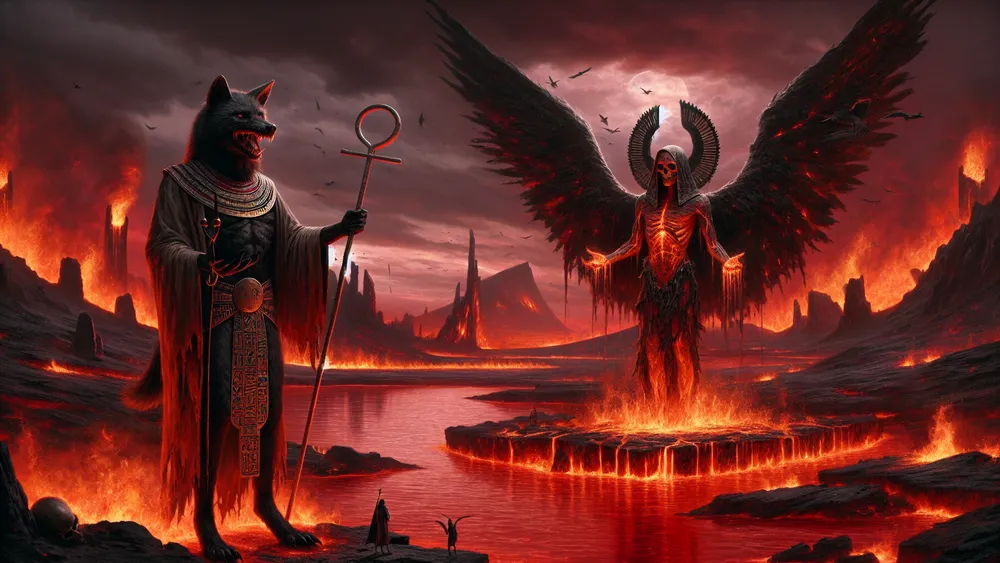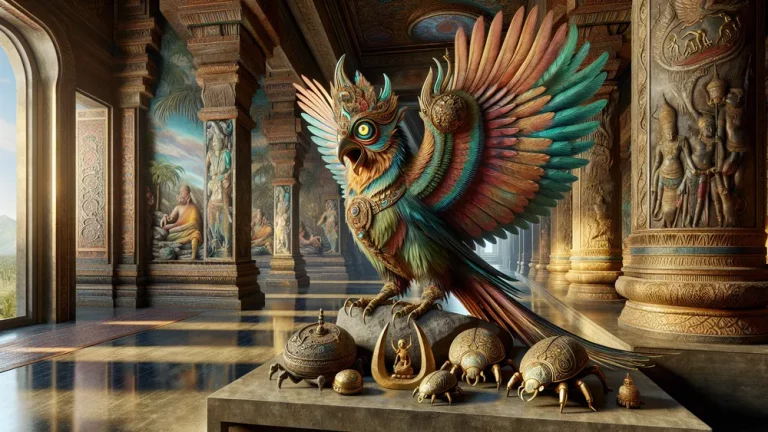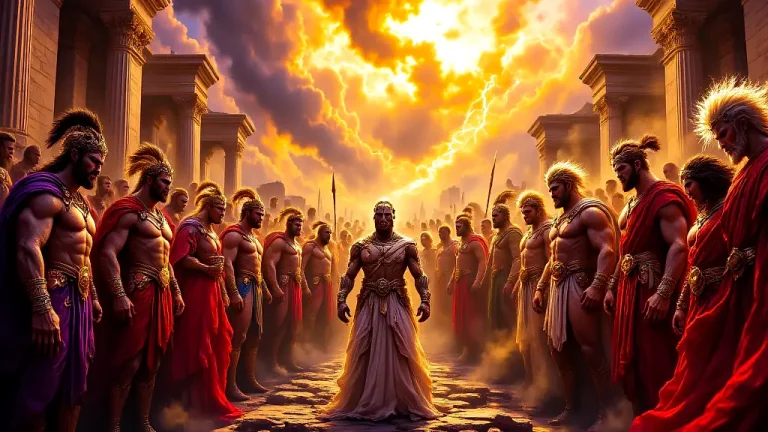Lake Of Fire In Ancient Egyptian And Christian Beliefs
Welcome to our look into the Lake of Fire, a concept that has interested and puzzled people for a long, long time. Think of a courtroom, where the final say is given. But no judge is there, only ancient gods and beings from myths are the ones who decide what happens to souls.
Key Points:
- The concept of the Lake of Fire originated in ancient Egyptian mythology and early Christian beliefs.
- In ancient Egyptian beliefs, the Lake of Fire symbolized judgment, cleansing, and the final destiny of souls in the afterlife.
- Early Christian teachings adapted the concept, emphasizing eternal punishment and divine judgment in the Lake of Fire.
- Ancient Egyptian texts such as the Pyramid Texts and Book of the Dead describe the Lake of Fire as a place of soul purification and judgment.
- In Christian eschatology, the Lake of Fire represents final judgment and eternal separation from God for the wicked.
- The Lake of Fire is a recurring theme in modern Christian theology and has influenced literature, movies, and popular culture.
- Views on the Lake of Fire vary within Christian groups, with interpretations ranging from literal eternal suffering to metaphorical separation from God.
This blog will take you through time, showing how the Lake of Fire was seen in old Egyptian stories and early Christian beliefs. We will look at where it came from, its meanings, and the symbols tied to it, checking out and comparing these two full-of-stories traditions.
Whether you’re just starting with mythology or already know a lot, this guide will give a simple and interesting look at how the Lake of Fire has shaped ideas about what comes after life and what judgment is like. So, let’s start this interesting trip together, seeing the deep parts of this burning idea through different times and places.
Lake Of Fire: Overview and Key Facts
| Key Point | Very Old Egyptian Beliefs | Christian Beliefs |
|---|---|---|
| Idea Start | It comes from the very old Egyptian stories, especially about afterlife and judgment. | Came up in early Christian teachings, mostly in the New Testament. |
| Main Texts | Pyramid Texts, Coffin Texts, and the Book of the Dead. | The New Testament, especially the Book of Revelation. |
| What It Stands For | Means cleaning, destroying bad things, and the final judgment of souls. | Shows forever punishment, divine judgment, and what bad people end up with. |
| Gods/Entities Related | Osiris, Anubis, and other gods that are connected to afterlife and judgment. | God, Jesus Christ, and angels that act as divine judges. |
| Cultural Importance | A major part of the very old Egyptians’ view of the afterlife and right living. | Core to Christian end-time beliefs and lessons on end times and salvation. |
| Art Shown In | Seen in tomb paintings, hieroglyphs, and funerary texts. | Shown in medieval and Renaissance art, and today’s Christian pictures. |
| Modern Views | Looked at by Egypt experts and scholars of very old religions. | Thought about by theologians, church leaders, and regular people in different Christian churches. |
| Main Goal | To keep moral order by punishing bad people and cleaning the soul. | To warn about forever damnation and push for right living. |
The Lake of Fire: A Look Back in Time
To fully get the Lake of Fire, we have to go back to where it started in very old groups and early religious books. Since it’s important, we will look at its beginnings in very old Egyptian stories.
Where It All Began in Ancient Egypt
In very old Egyptian stories, the Lake of Fire was a key part of the soul’s trip after death. Think of it like a big courtroom where the souls of dead people were judged by gods like Osiris and Anubis. Although it was not just a place of punishment, it also was for cleaning, where very bad people were destroyed, and good people were cleaned.
This burning lake was part of the Duat, which was the Egyptian underworld. In this place, the heart of the dead person was weighed against Ma’at’s feather, the goddess of truth and justice. If the heart was heavier because of sin, the soul would go to the Lake of Fire, showing the ultimate judgment and moral order.
The Lake of Fire’s importance in afterlife setup and judgment is written down in several key very old Egyptian writings. These texts give a clear description of afterlife and the tests that souls must face. Here are some main sources that talk about the Lake of Fire:
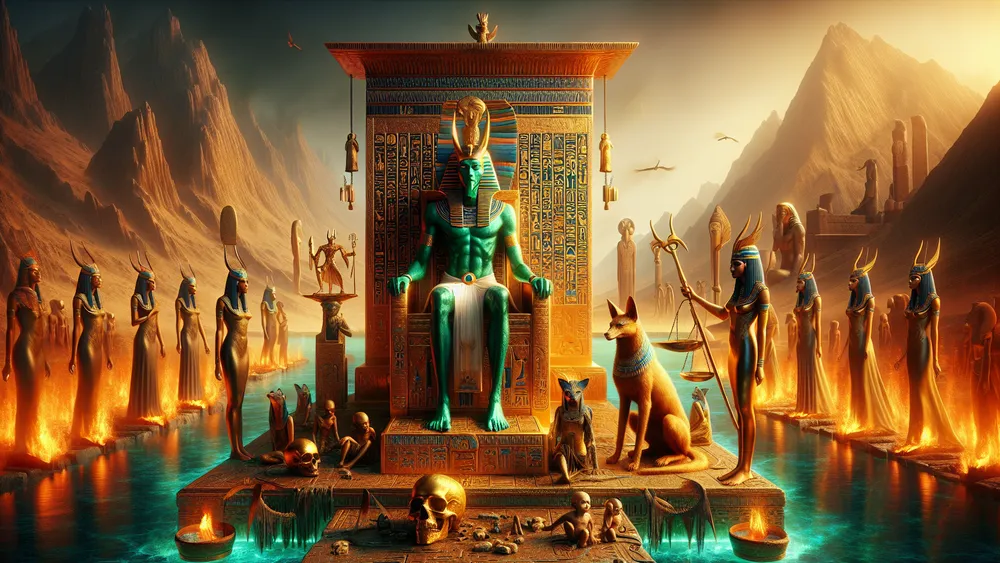
- Pyramid Texts: These are some of the oldest religious writings in the world. They describe the pharaoh’s soul trip and the tests it faces, including the Lake of Fire.
- Coffin Texts: A collection of burial spells written on coffins that also say something about the Lake of Fire as part of the soul’s trip through the Duat.
- Book of the Dead: Probably the most well-known of all, this collection of spells, prayers, and incantations gives detailed help for getting through the afterlife, including meetings with the Lake of Fire.
These texts and hieroglyphs offer a window into the very old Egyptian worldview, stressing the importance of honesty and what happens because of one’s actions in life.
The Lake of Fire played a crucial role in ancient Egyptian beliefs about the afterlife, where souls were judged based on their actions in life, as seen in texts like the Pyramid Texts, Coffin Texts, and Book of the Dead.
The Early Christian Take on the Lake of Fire
In early Christian beliefs, the idea of the Lake of Fire was taken and changed to fit the new Christian setup of God’s judgment and forever punishment. Think of it like the highest court where the final decision about a person’s soul is made. Early Christians got ideas from earlier traditions, including Jewish end-times writings, and they saw the Lake of Fire differently, showing forever damnation for bad people.
This fiery lake turned into a key piece in Christian end-time beliefs, showing the final place for those who did not accept God’s saving.
The New Testament, especially the Book of Revelation, gives clear pictures of the Lake of Fire. In Revelation 20:14-15, it is called the “second death,” where death and Hades are thrown into the Lake of Fire, along with anyone whose name is not found in the Book of Life. These images stress the final and serious nature of God’s judgment. Other early Christian books also speak about the Lake of Fire, adding to its importance in Christian teachings about end times. Here are some main books that talk about the Lake of Fire:
- Book of Revelation: The main source in the New Testament that explains the Lake of Fire, especially in chapters 19 and 20.
- Gospel of Matthew: Includes mentions of forever fire and punishment, which are connected to the Lake of Fire (for example, Matthew 25:41).
- Epistle of Jude: Briefly mentions forever fire as a type of God’s punishment (Jude 1:7).
These books together help Christians understand the Lake of Fire as a place of final judgment and forever being apart from God for bad people.
What It All Means
Since we looked into the starts and early views of the Lake of Fire, let’s go into its sign ideas in both ancient Egyptian and Christian setups.
What It Meant to the Ancient Egyptians
To the ancient Egyptians, the Lake of Fire showed both judging and cleaning in life after death. Think of it like a holy oven where the souls of the dead were tried and cleaned. Much like how dirt is burned away from metals. Clearly shown in Egyptian art and writing, the Duat scenes often showed the Lake of Fire as an essential step in the soul’s trip. Ancient pictures and grave drawings which they often showed this fiery lake, stressing its role in the moral and soul cleaning of the soul. Common signs linked with the Lake of Fire include:
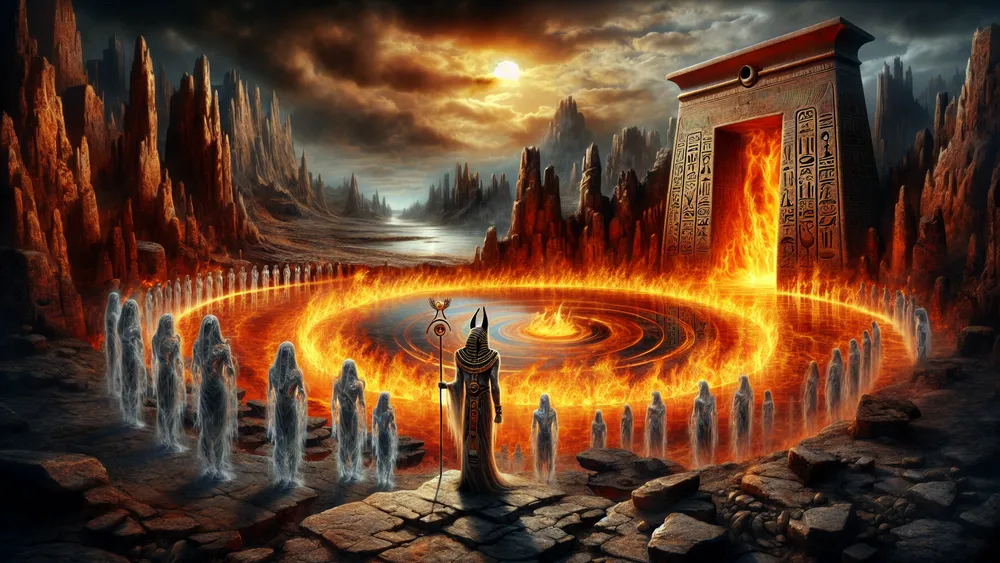
- Fire: That showed cleaning and destroying.
- Scales: That showed the weighing of the heart against the feather of Ma’at.
- Feather of Ma’at: That showed truth, justice, and being good.
These signs together point out the need for being good and the outcomes of one’s actions in life, through the eyes of ancient Egyptian ideas.
What It Stands for in Christianity
In Christian end-time beliefs, the Lake of Fire holds deep meaning as the final place of God’s judgment and forever punishment. Think of it like the last court where final justice is given, and where the fate of souls is set forever.
Many times, the Lake of Fire shows endless suffering for bad people, showing what happens when God’s saving is not accepted. These images stress the seriousness of moral choices and the forever consequences of one’s actions in life.
The idea is clearly shown in the Book of Revelation, where it is called the “second death”, a never-changing, final state of being apart from God.
Different Christian groups see the Lake of Fire in different ways, which shows different theological perspectives. For example, traditional Catholic and many Protestant beliefs stress forever conscious suffering, where bad people suffer without end. But some Protestant groups, like Seventh-day Adventists, believe in annihilationism, which is the idea that bad people will be destroyed and stop existing. Eastern Orthodox Christianity often focuses more on the changing and cleaning parts of God’s judgment, sometimes which line up with the idea of universal reconciliation, where all souls are finally brought back to God. Here are some main theological ideas of the Lake of Fire:
- Eternal Torment: The idea that bad people will suffer forever conscious punishment.
- Annihilationism: The idea that bad people will be totally destroyed and stop to be.
- Universal Reconciliation: The idea that all souls will at some point be brought back to God, even if they first face punishment.
These ideas point out the different ways the Lake of Fire is seen in Christianity, each showing a different view on God’s justice and mercy.
Putting Them Side by Side
Since we looked into the symbolic ideas and meanings of the Lake of Fire in both ancient Egyptian and Christian setups, let’s now look at these ideas to see where they match and where they differ.
How Egyptian and Christian Beliefs Match Up
If you compare the idea of the Lake of Fire in ancient Egyptian and Christian beliefs systems, we find interesting similarities, especially in judgment, punishment, and cleaning. In both these ideas, the Lake of Fire is a place where souls are judged on being good.
For the ancient Egyptians, it was a step in the afterlife where the heart of the dead person was weighed against the feather of Ma’at, which shows truth and justice. In the same way, in Christian end-time beliefs, the Lake of Fire shows the final place for bad people, where they face forever punishment for their wrongs.
Both ideas use the fire image to show cleaning and the results of not being good, much like a modern-day court where justice is given, and wrongs are fixed.
Even though the ideas have cultural and theological differences, the core themes of moral judgment and the results of one’s actions are very similar. Both ancient Egyptians and Christians thought of the Lake of Fire as a key part of the afterlife, stressing the need of living a good life. The idea of cleaning through fire is also a shared theme, which means the removal of bad things and the final test of one’s soul. To make these comparisons clearer, here is a table showing the main parts of the Lake of Fire in both ideas:
| Aspect | Ancient Egyptian Beliefs | Christian Beliefs |
|---|---|---|
| Role | Judgment and cleaning in the afterlife | Final judgment and forever punishment |
| Symbolism | Fire as cleaning and moral testing | Fire as forever punishment and cleaning |
| Judgment Criteria | Weighing of the heart against the feather of Ma’at | Being good and accepting God’s salvation |
| Outcome | Cleaning or destroying of the soul | Forever suffering or annihilation |
This table shows how both ideas use the Lake of Fire to explain the need for being good and the results of one’s actions, even though they have different cultural and theological setups.
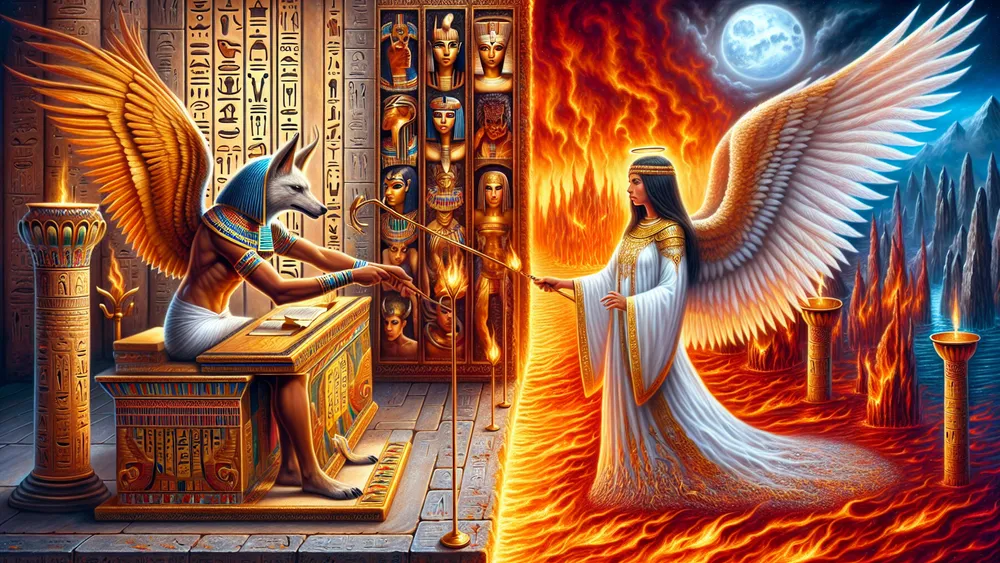
Where They Don’t See Eye to Eye
Although both ancient Egyptian and Christian ideas include the Lake of Fire, they differ a lot in their views and accounts. In ancient Egyptian stories, the Lake of Fire is mainly a stage in the afterlife where they weigh the heart of the dead person against Ma’at’s feather, which shows a balance of truth and justice.
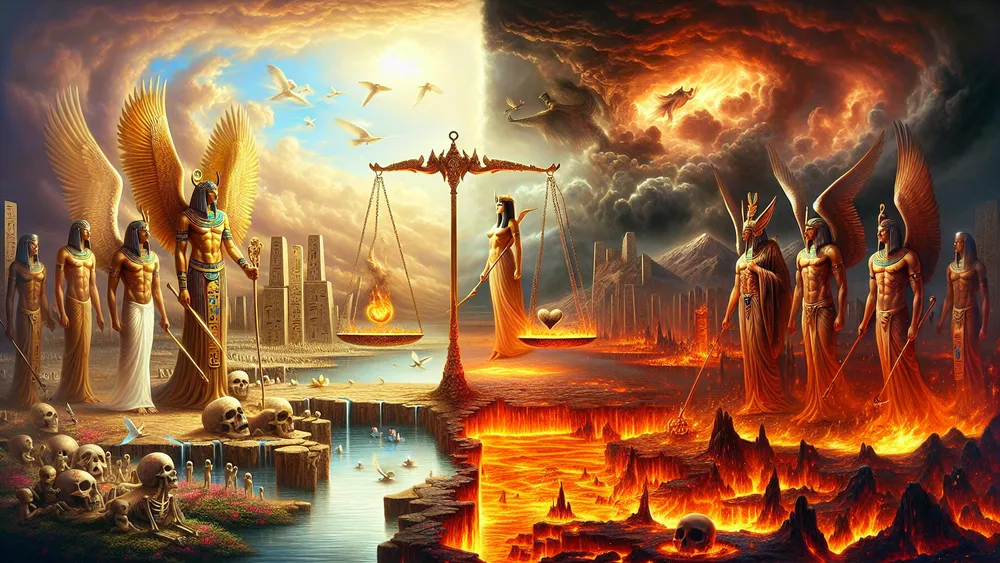
This part is more about cleaning and testing someone’s goodness. But in Christian end-time beliefs, the Lake of Fire is shown as a place of forever punishment for bad people, stressing the finality of God’s judgment.
The religious reasons for these differences come from the very different religious setups: ancient Egyptian beliefs were closely linked with their polytheistic and full of rituals culture, focusing on the balance and harmony of Ma’at. Whereas Christianity, believing in one God and aiming at salvation, stresses the contrast of eternal salvation against eternal damnation.
Culturally, these differences point to the larger worldviews of each society, with the Egyptians seeing the afterlife as a continuation of life’s journey. Meanwhile, Christians see it as a final destination based on one’s choices on earth.
Ancient Egyptian and Christian beliefs about the Lake of Fire differ significantly due to their views on judgment and punishment in the afterlife.
The Lake of Fire Today
After we looked at the historical and religious views of the Lake of Fire, let’s now see how people understand and show this idea in modern times.
What Modern Christians Think
Modern Christian groups see the Lake of Fire in different ways, which shows a range of religious views. Some, especially in evangelical and fundamentalist circles, see the Lake of Fire as a real place of eternal suffering for bad people, which makes urgent the need for salvation and moral living.
Others, like some mainline Protestant and liberal Christian groups, see it like a metaphor, showing the final being away from God, not a place of fire and brimstone. These views greatly affect modern Christian thought and behavior, shaping religious talks, religious education, and personal beliefs.
For example, the idea of the Lake of Fire might be used in talks to stress the results of sin and the need to repent, just like how a modern legal system uses the idea of punishment to stop wrongdoing and promote justice.
The Lake of Fire in Movies and Books
The idea of the Lake of Fire has made a big impact on books, movies, and other everyday media, that often use it as a strong sign of final decision and penalty. In books, it shows up in works like Dante’s “Inferno,” where the fiery pit is clearly shown as a place of eternal pain for sinners.
In modern movies, the Lake of Fire is often used to add to the drama and show the stakes of moral choices, such as in the movie “Constantine,” where it is the final place for the damned. Moreover, TV shows like “Supernatural” also include the Lake of Fire, using it to look at ideas of redemption and damnation.
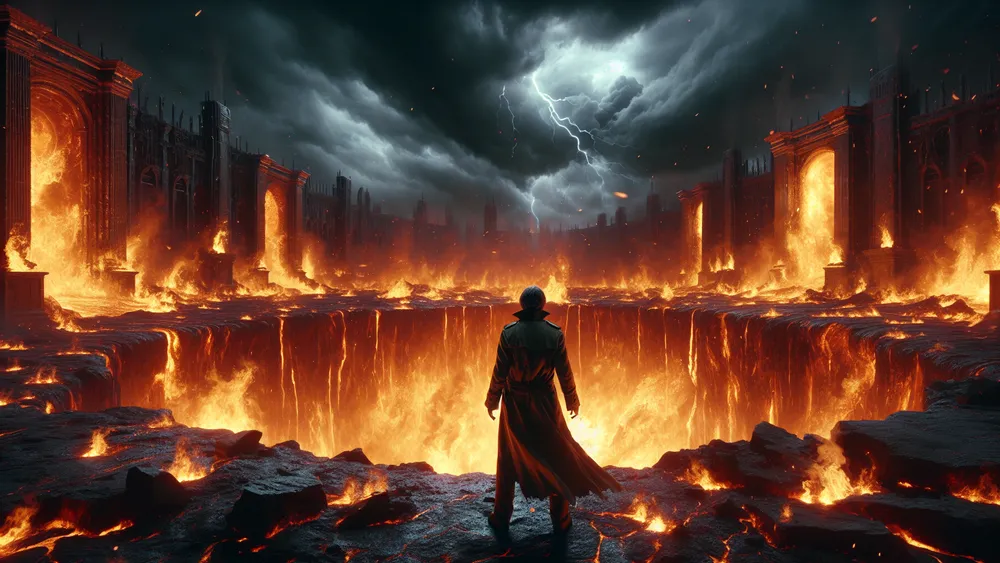
These pictures connect with people by tapping into deep fears and moral questions, just like how a suspenseful thriller uses the threat of danger to keep viewers on the edge of their seats.
FAQs
1. What is the origin of the Lake of Fire concept?
The origin of the Lake of Fire concept can be traced back to ancient Egyptian mythology and early Christian theology.
2. How is the Lake of Fire depicted in ancient Egyptian texts?
The Lake of Fire is depicted in ancient Egyptian texts as a fiery body of water used for the purification and punishment of souls in the afterlife.
3. What is the significance of the Lake of Fire in Christian eschatology?
The significance of the Lake of Fire in Christian eschatology lies in its representation as the final place of punishment for the wicked and the ultimate defeat of evil.
4. Are there any modern interpretations of the Lake of Fire?
Modern interpretations of the Lake of Fire vary widely, encompassing both religious and secular perspectives.

